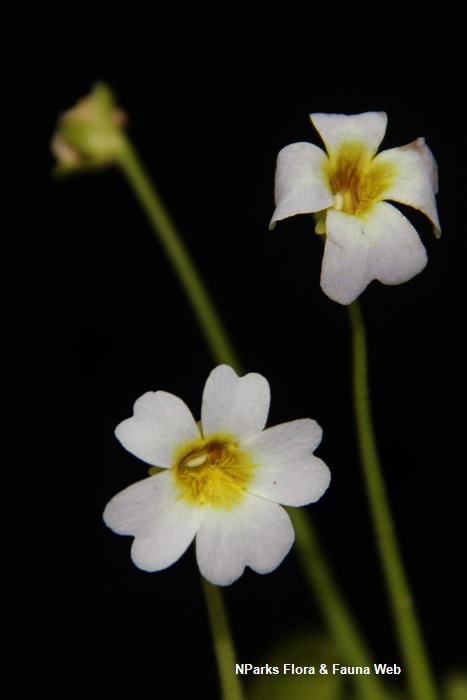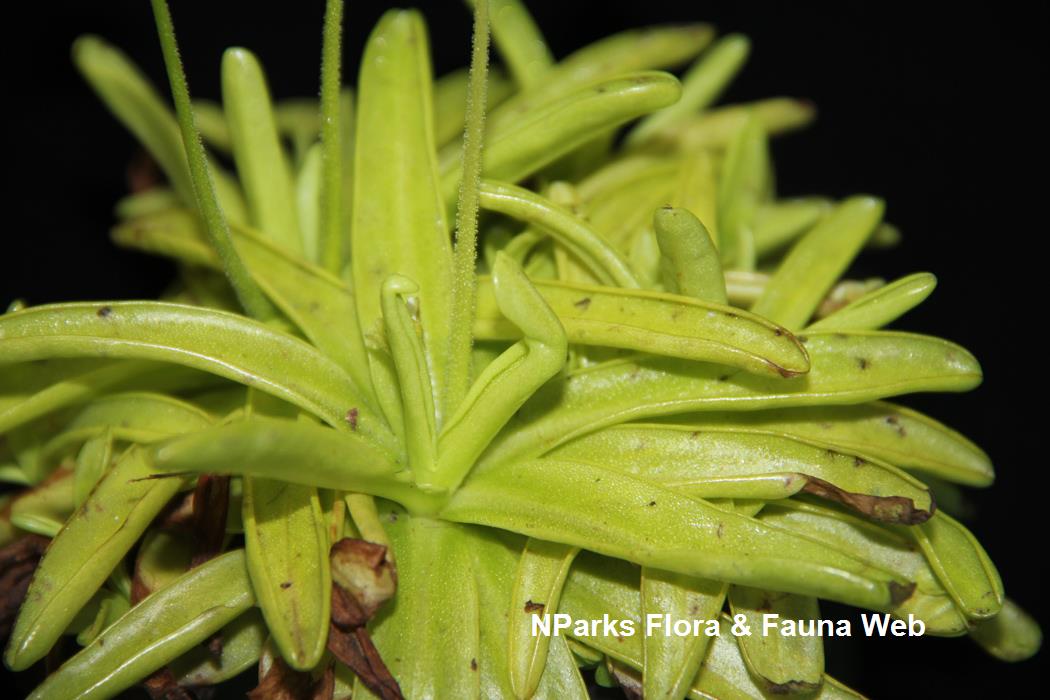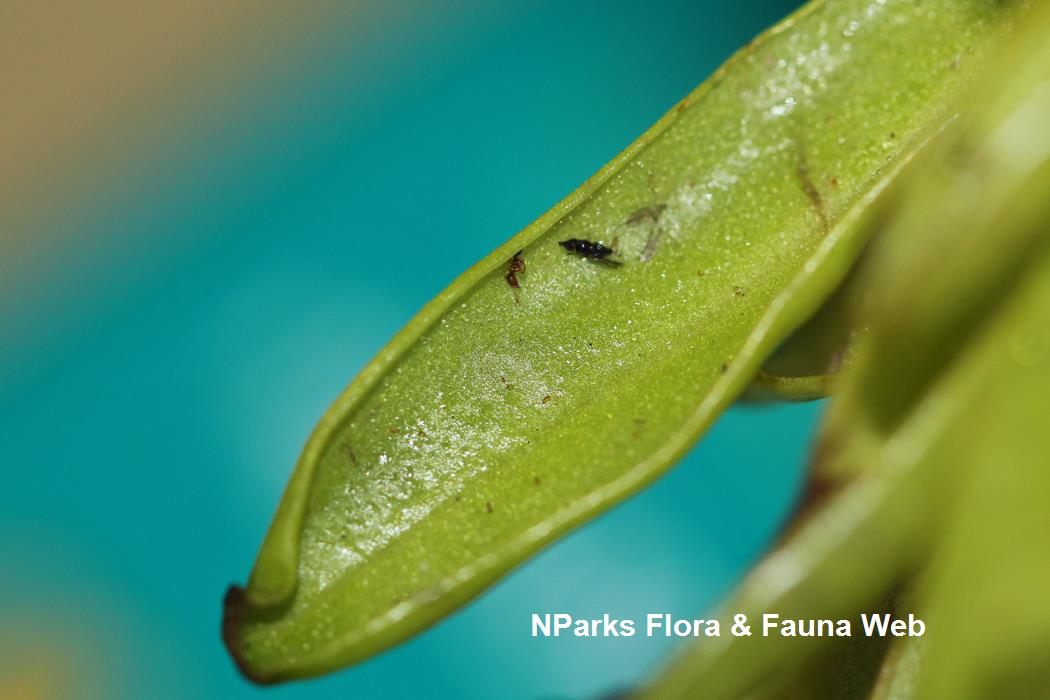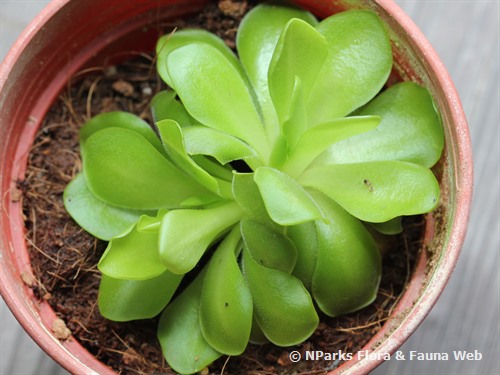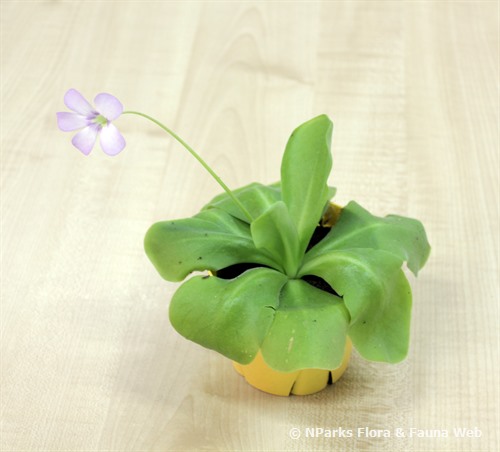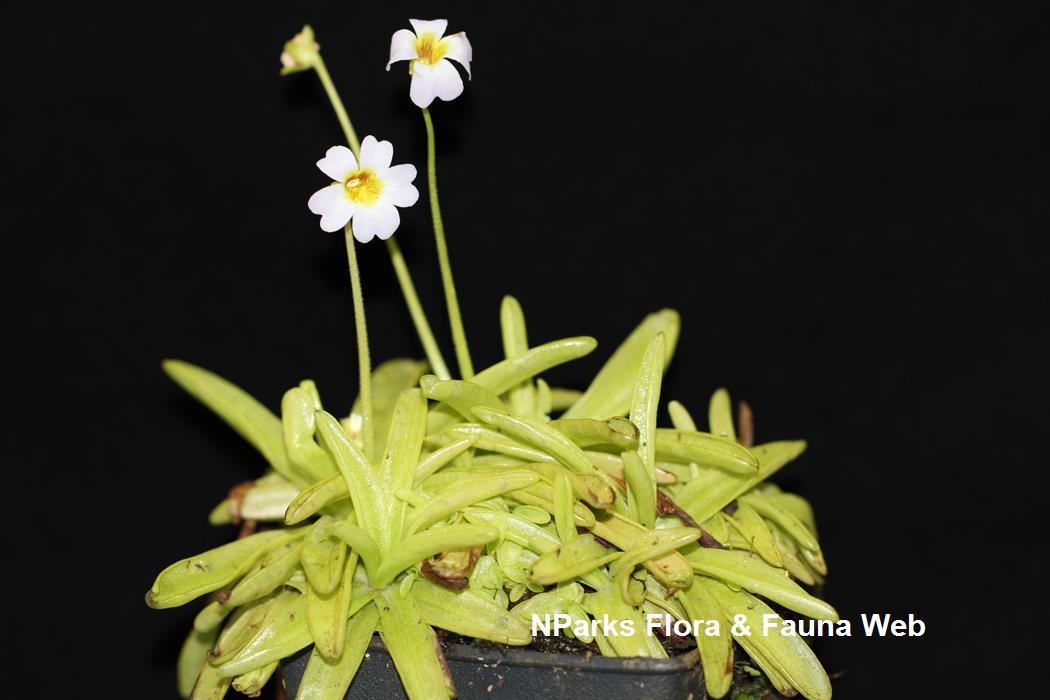
Back
Pinguicula primuliflora C.E.Wood & R.K.Godfrey
| Family Name: | Lentibulariaceae |
| Common Name: | Primrose Butterwort |
Primrose Butterwort is a carnivorous plant with sticky leaves that trap unsuspecting insects. The common name is derived from the resemblance of its flower to those of Primrose (Primula spp.)
Name
Classifications and Characteristics
| Plant Division | Angiosperms (Flowering Seed Plants) |
|---|---|
| Plant Growth Form | Herbaceous Plant |
| Lifespan (in Singapore) | Perennial |
| Mode of Nutrition | Autotrophic, Heterotrophic (Insectivorous / Carnivorous) |
| Plant Shape | Compact |
| Maximum Plant Spread / Crown Width | 4 cm to 16 cm |
Biogeography
| Native Distribution | It occurs in peaty bogs in Southeastern USA from Mississippi to Florida. It prefers a warm temperate climate. |
|---|---|
| Native Habitat | Terrestrial |
| Preferred Climate Zone | Temperate |
Description and Ethnobotany
| Growth Form | It forms a compact, basal rosette 4 - 16 cm wide. |
|---|---|
| Foliage | Oblong, bright green leaves are arranged in a basal rosette that is 4-16 cm wide. The leaves are covered in knobby glandular hairs that create a sticky surface to trap and digest insect prey. The leaves also produce antibacterial compounds that prevent prey from rotting as the plant digests it. Plantlets form at the leaf tips where it touches the media. |
| Flowers | Solitary flower is composed of a three-lobed upper lip and two-lobed lower lip. With each lobe split in to two rounded parts, it resembles a Primula flower. The flower is light purple with a yellow throat streaked by brown veins. The leafless floral stalk known as a scape is covered in knobby glandular hairs that trap insects. |
| Fruit | Round, 5 mm wide fruit known as a capsule contains many small, brown seeds. |
| Cultivation | It can be potted with Sphagnum peat moss at the bottom and a mixture of Sphagnum moss and perlite at the top. The media should be kept consistently moist. |
Plant Care and Propagation
| Light Preference | Semi-Shade |
|---|---|
| Water Preference | Lots of Water |
| Rootzone Tolerance | Moist Soils, Waterlogged Soils |
Floral (Angiosperm)
| Flower & Plant Sexuality | Bisexual Flowers |
| Flower Colour(s) | Purple, Yellow / Golden |
|---|---|
| Flower Texture(s) | Smooth |
| Flower Grouping | Solitary |
| Flower Location | Terminal |
| Flower Symmetry | Asymmetrical |
| Individual Flower Shape | Labiate / Lipped |
Fruit, Seed and Spore
| Fruit Classification | Simple Fruit |
|---|---|
| Fruit Type | Dehiscent Dry Fruit , Capsule |
Image Repository
Others
| Master ID | 34074 |
|---|---|
| Species ID | 8487 |
| Flora Disclaimer | The information in this website has been compiled from reliable sources, such as reference works on medicinal plants. It is not a substitute for medical advice or treatment and NParks does not purport to provide any medical advice. Readers should always consult his/her physician before using or consuming a plant for medicinal purposes. |

